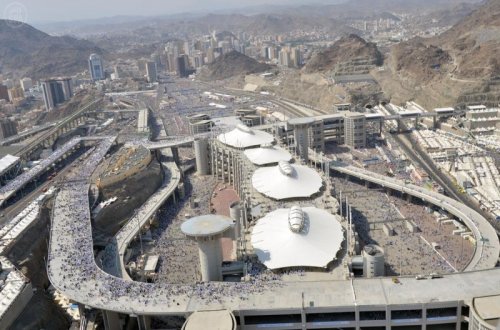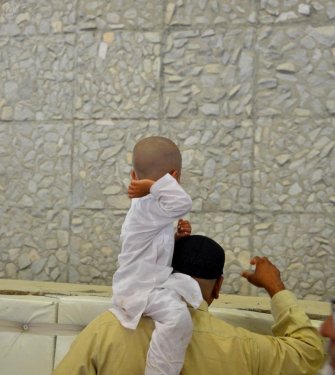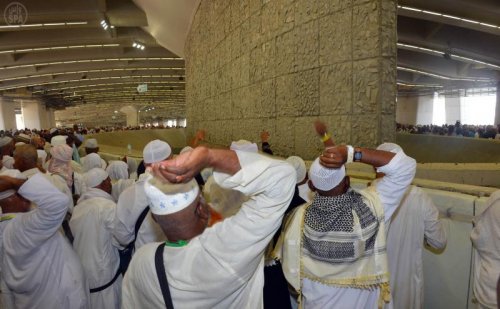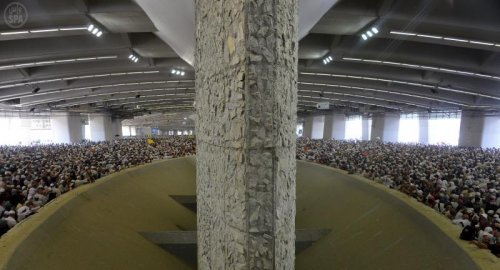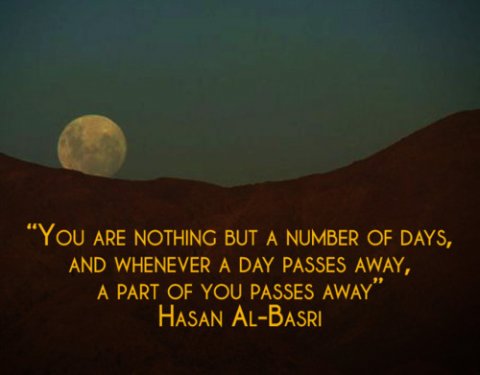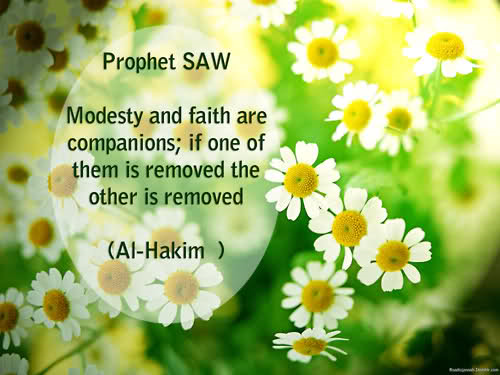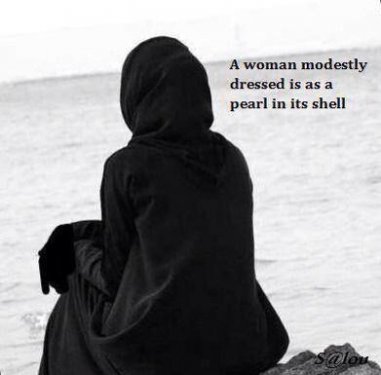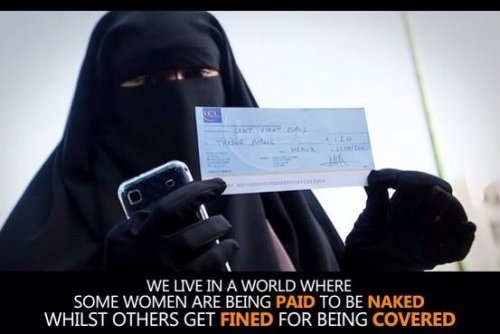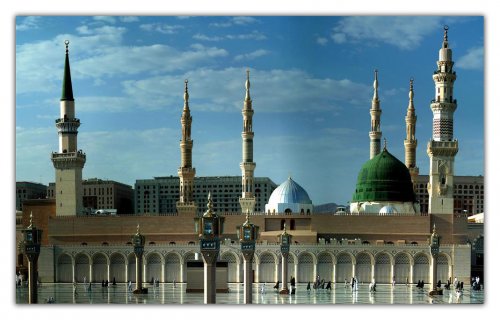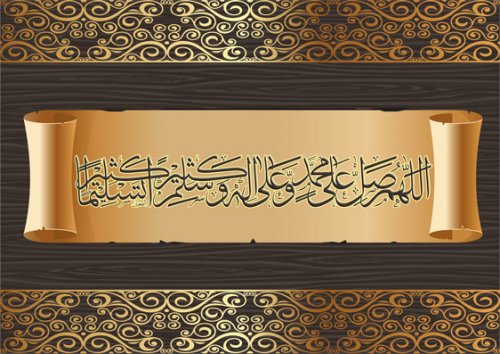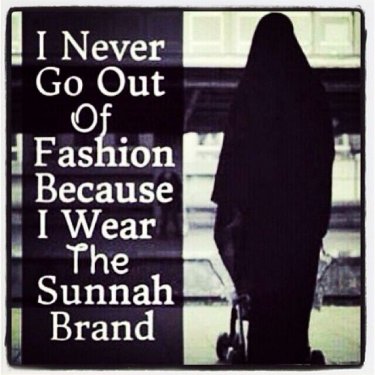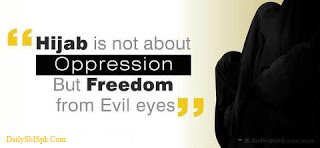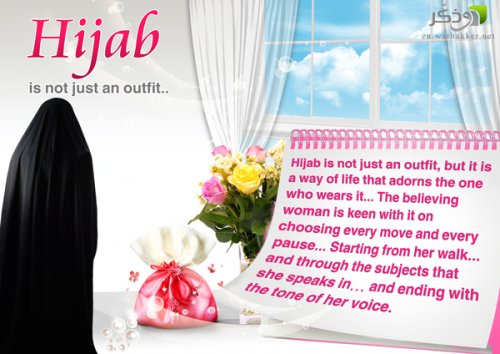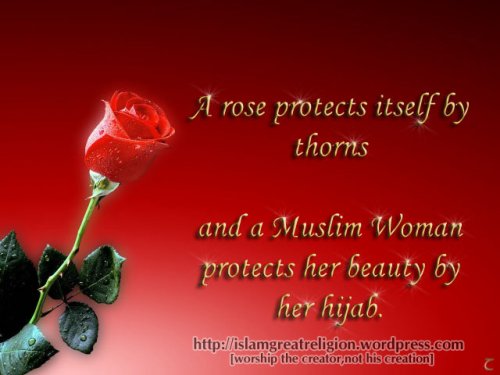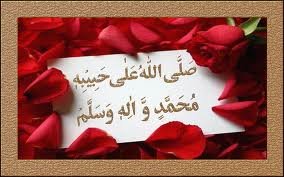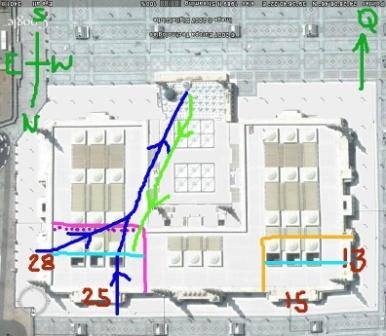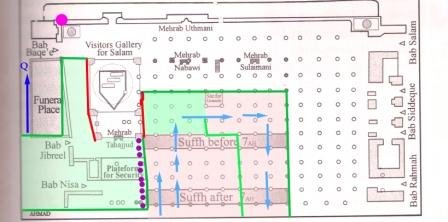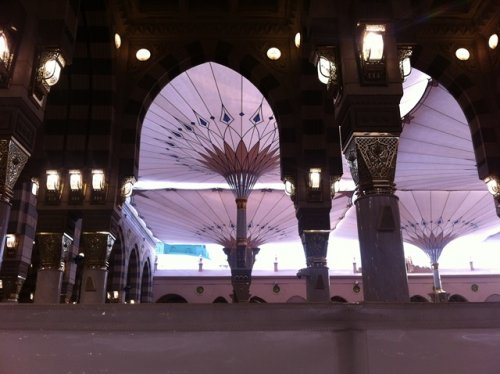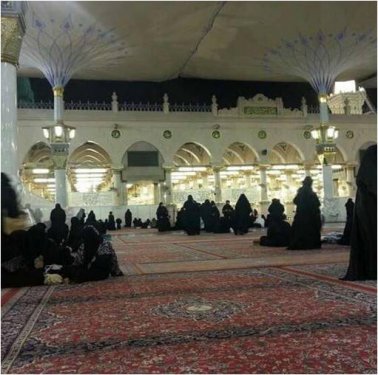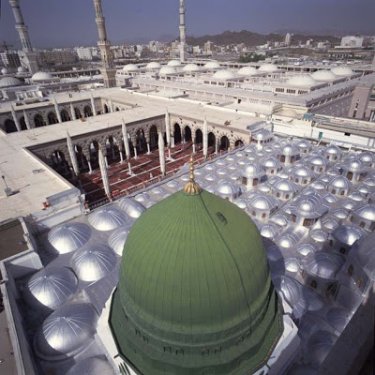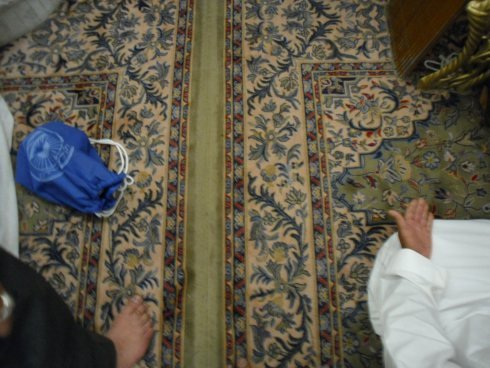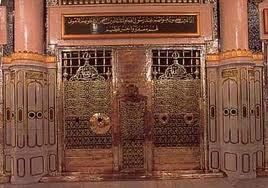-
Posts
8,434 -
Joined
-
Days Won
771
Content Type
Profiles
Forums
Events
Everything posted by ummtaalib
-
-
-
-
-
-
-
In search of Truth This book presents a story of a sincere search for the true religion and the Divine guidance, which led to the ultimate destination. Hazrat Maulana Yunus Patel Saheb narrated this incident, presenting detail and explanation in the lessons derived. The discourse leaves one with deep appreciation for the tremendous bounties of Imaan and Islam, and the great fortune of being followers of Nabi Muhammad (1). PDF or DOWNLOAD HERE
-
Door of Hope وَالَّذِينَ إِذَا فَعَلُوا فَاحِشَةً أَوْ ظَلَمُوا أَنْفُسَهُمْ ذَكَرُوا اللَّهَ فَاسْتَغْفَرُوا لِذُنُوبِهِمْ وَمَنْ يَغْفِرُ الذُّنُوبَ إِلَّا اللَّهُ وَلَمْ يُصِرُّوا عَلَى مَا فَعَلُوا وَهُمْ يَعْلَمُونَ Al-Imran - Chapter 3: Verse 135 “Those who, when they commit a gross indecency or wrong themselves, remember God and pray for the forgiveness of their sins - for who but God can forgive sins? - and do not knowingly persist in doing the wrong they may have done.” Never does Islam slam the door in the face of a weak sinner leaving him lost in the wilderness. Never does it let him feel permanently rejected, afraid to turn back. On the contrary, it holds for him the prospect of forgiveness. It shows him the way and holds his trembling hand, steadying him and giving him the light he needs to return to his secure refuge. It only requires one thing of him, namely, that his heart and soul are not so hardened so as to make him forget God. As long as he remembers God and keeps alive in his conscience the voice of guidance and maintains in his heart the yearning for God's grace, the light will shine again in his soul and the seed of faith will burst forth with a new plant. Islam knows that side by side with man's weaknesses and carnal desires there exist strength and sublime aspirations. For this reason, Islam is sympathetic to man in his moment of weakness, places him back on his way to a higher horizon, as long as he remembers God and does not knowingly persist with his wrongdoing. Thus, Islam combines its call to man to aspire to a higher horizon with its mercy and compassion, knowing man's weakness and capability. It ensures that the door of hope is always open in front of man as it motivates him to exert his utmost in his aspiration towards the sublime. Compiled From: "In The Shade of The Quran" Jamiatul Ulama (KZN) Council of Muslim Theologians 223 Alpine Road, Overport, Durban
-
Sisters in the State of Menstruation while in Madinah This brings me to the final part of the Sisters' Ziyaarah posts. Many women find themselves in the state of menstruation during their stay in Madinatul Munawwarah, often for the entire stay. It can be very traumatic and even depressing for some while for others it is of no consequence and most of the time is spent in negligence, roaming the shopping malls. To the question of whether women in this state can recite Salaat and Salaam and enter the Masjid, the answer is, it is permissible to recite Salaat and Salaam however it is forbidden to enter any Masjid in the state of menstruation. To a question regarding what women should do if they find themselves in the state of Menstruation or Post-natal bleeding, Mufti Muhammad Faruq answers, "It is necessary to pray Salaam and Durood towards Rasulullaah sallallaahu 'alayhi wasallam even if the woman is in this state. However as it is forbidden to enter the Masjid in this state, the woman will stand outside the Masjid near the green dome (under which the blessed grave is situated) and read Salaam and Durood" This picture shows the side of Masjid Nabawi where one can stand facing the green dome area. The objective is to recite Durood in abundance from near or far, be it from within the Masjid Nabawi or outside, with or without Wudhu. The reward will be the same. The only drawback (If one can call it that because every condition is from Allah subhaanahu wata'ala and we should remain happy) would be (as mentioned by Mufti Muhammad Faruq) that, "Women would be unable to maximise the opportunity of reward from Riyadhul Jannah, Masjid Nabawi or any other masjid. If it is at all possible, a serious effort should be made so that the whole stay in Madinah Munawwarah does not coincide with menstruation." As the following Hadith shows, the greetings will be conveyed no matter where we send them from. God, without any doubt, has angels that roam the earth and convey to me the greetings of my community.” [Hadīth, recorded by Tirmidhi] Even better on Fridays: “Verily, your best day is Friday, so invoke blessings upon me in abundance on this day, for your invocation is presented to me.’ They said, ‘O Messenger of God! How can our invocations be presented to you after your bones have turned to dust? He replied ‘Verily, God has forbidden the earth from consuming the bodies of the Messengers.” [Hadīth, recorded by ibn Majah and others] Many Mashaikh advise visitors to the blessed city to set a target of a number of Salawaat and thereafter aim to complete that number. This keeps the mind and heart occupied while at the same time one avoids being negligent. This advise is general however for women in the state of menstruation, this could be one way of reciting Durood in abundance while avoiding negligence.
-
-
-
-
-
Actually no, I don't remember it as being covered. Jazaakillaahu khayraa. Please do post other relevant facts you find or think of to add. (You'll notice I edited your post to make the text bold so the subject stands out)
-
Alhamdulillah you've found it helpful...I pray many more sisters find the information helpful inshaAllah....and may we soon be amongst the visitors of the Haramayn Sharifayn!
-
-
The following is very helpful information from Al-Miskeenah (Click on picture to enlarge) This post is in response to Sister Shahida’s inquiry about the conditions of Ziyarah for sisters when visiting our Blessed Al-Mustafa SallAllahu alaihi wasallam in this Luminous City of Light and Radiance. Information is not only relevant for sisters but also for brothers to understand, as many visit with their female family members who need the basic information on where and when to go. Sisters often arrive at the wrong section assuming they can access the Rowdha Shareef from there, or some arrive towards the end of visiting times and are prevented from entering. In some cases some miss visiting altogether due to not knowing the routine. Also, the conditions vary according to the time of the year, between the few months when there are no Umrah visa issued, the low and the peak Umrah seasons culminating in Ramadhan and Hajj. There are only two prayer areas for sisters; the north western corner (orange line) accessed through doors 13-15, and the north eastern corner (pink line) through doors 25-28. In both sections the areas on the Qiblah side of the light blue lines are for sisters without children with a barrier separating the area for sisters with children. Security sisters are positioned at the openings of this barrier ensuring this rule is abided by. However during the busy times of Hajj and Ramadhan this division usually does not apply as the number of children at these times is far less. Access to Rowdha Shareef for sisters is ONLY through the eastern section, by following the blue path. The sisters prayer area is separated from the men’s area by a tall finely decorated “mashrabiyah”, the traditional wooden Arabic screen, which allows air to still circulate, but limits visibility either way. The purple dotted line indicates where the huge doorways are for gaining entrance to the Rowdha Shareef. These are only opened during the Ziyarah times for sisters. The main session being after Ishraq until approximately 10.30am, but it is advisable to arrive by 10am the latest as the entry doors will be shut, even though sisters will still be inside the visiting area. During the crowded seasons it is best to remain in the Masjid from after Fajr Salat making your way to as near to the mashrabiyah (purple dots) as possible. The wait may be an hour or so as brothers need to be vacated from the area allocated for sisters and the white canvas fence to be erected. This demarcates the pathway to be followed to reach the visiting area and the greater men’s section of the Masjid, brothers are still able to access the Masjid and cross the sisters’ pathway during their visiting times. The actual position of this barrier tends to change, especially in and immediately around the Rowdha Shareef area, maybe according to the numbers, maybe trying various configurations, as the whole arrangement is far from satisfactory. The second time for sisters’ ziyarah is after Salatul Zuhur. This session is only very short compared to the morning session so once again wait at the mashrabiyah soon after Salat has finished. During peak times they have tried to implement a one way system….the lime green line represents the exit pathway, which is a separate fenced area. Many do not realize this and leave their shoes in shelves on their way into the Rowdha Shareef, and then find they have to walk all the way back to the main sisters area to enter the way in again. Shoes and bags can be a hindrance in the crowds, and yet leaving them somewhere also can cause distress in locating them again, and the issue of “lost” shoes has also become rife! I always recommend you come with a shoe bag….one that has a strap that is across the chest so your hands are free. The other “feature” employed when the crowds are great is the marshalling into groups according to nationality. Various “security” guards are given placards on sticks with the name of the main different countries on them…they stand in certain places on a chair waving these placards for the sisters to assemble around them. They are given a lecture on the Adab of Ziarah and can be “held” in these holding areas for ages. I have seen physical fights with this arrangement, and there are many cases of broken bones and sisters taken to hospital! Another aspect of trying to organize the crowds is the use of megaphones! Yes….megaphones in the Masjid, as well as under the umbrella area, so close to our Beloved Rasulullah SallAllahu alaihi wasallam! And then there is the moving canvas tactic! Two “security” guard sisters hold a piece of canvas about one meter wide and five long…they “wrap” this around a group of sisters….and “pull” them into place! And during Ramadhan and Hajj , this holding place is literally a fenced in area positioned in front of one of the doors of the mashrabiyah. Once it is full it is shut. Sisters have to wait in these pens until space is made available under the umbrella area. If all this sounds like a disgrace it is because it is! It is a shambles. The emotions are high. Thousands of sisters have come to pay their respects, to give their Salam, some having waited decades for this opportunity. Many just sit and cry, Many are too weak or incapacitated to sustain this treatment. Hundreds resign themselves to never making it to the Rowdha area and convey their Salam from the back of the Masjid, or from the other sisters prayer area where it is calm and quiet. (Click on picture to enlarge) This is a detail of the visiting area. The smaller green section is the green carpet area of Rowdha Shareef available for the sisters. The darker green lines represent the fence that is erected prior to our visiting times. The blue arrows indicate the direction one is to follow, the central green line is the fence separating the going in area to the exit area. It is almost impossible to offer two Raka’ts now, the crowds being too dense, and the "security" guards are on high stools yelling directions, and madly gesturing the whole time. At no time are sisters in the area where the Mihrab or the Minbar are, and as can be seen the closest we can be to our Beloved Prophet SallAllahu alaihi wasallam is at the far end of what was the house of our Lady Aishah RadhiAllahu anha. The line of purple dots indicate where the barrier is erected when it is high season, which is the majority of the year now, other times sisters can enter into this larger green area to be near the place of Tahujjud, to have access to the raised platform, which some narrations say was the Suffah, others as written on this diagram. The narrow area is most sought after to offer Salam as it it as the Mubarak feet of our Beloved Prophet SallAllahu alaihi wasallam and those of his blessed companions, Abu Bakr and Umar RadhiAllahu alahi wasallam. The red lines represent what are like wooden counters, reaching about waist high that are placed there during the sisters visits, the "security" guard ladies walk up and down this narrow area looking for "bida’h" and soon pounce on any one they feel is facing the "wrong" way or reading the "wrong" book of Du’a. From this area you can look ahead to the corner of Bab Baqi, and the Qiblah wall….the pink dot indicates where we have been told, is one of the places where Jibreel Alaihis Sallam would come when visiting Rasulullah SallAllahu alaihi wasallam. Brothers can see this as a small wire grill with a beautiful flower design on it, and sisters fortunate enough to be here during the off season can see this, as well as use Bab Jibreel and Bab An-Nissa’. It is not that long ago when sisters could enter and exit from this side of the Masjid for Ziyarah, but for some reason we no longer can access this side. It makes it a very long walk for those staying, or living on the southern side, as you have to walk to the back of the Masjid and then all the way to the front again to be in the visiting area. “A group of Angels travel throughout the earth to convey greetings of my Ummah to me.” How blessed we are that these Angels are not confined to only those who are blessed to be in the immediate vicinity of our blessed Prophet SallAllahu alaihi wasallam. Alhumdulillah. By saying one Durood as you read this, wherever you happen to be on the face of the earth, an Angel will immediately carry this to our Beloved Prophet SallAllahu alaihi wasallam as he rests under the splendid Dome of Felicity. Alhumdulillah! And this is for everyday….EXCEPT Yaumul Juma’ah….when, wherever you are Al-Mustafa SallAllahu alaihi wasallam hears your greetings himself! SubhanAllah!
-
Exit from the Rowdhah Mubarak Leaving the area can be just as chaotic if one stays till the end of the visiting time! Quick picture taken by Sister Miskeenah on the way out of the Rowdhah Mubarak Taken from Here with more detailed info on Sisters' Visiting the Rowdhah Mubarak
-
The descriptions in the previous post is no exaggeration! From the experiences of many sisters, it can be worse! Patience at this time would be a great virtue and for the patient, Allah subhaanahu wata'ala will open a way as the following story shows.... An Inspirational Story by a Muslim Sister From "Women's Guide in Madinah Munawwarah" by Mufti Muhammad Faruq Through the Fadhl of Allah ta'ala, I had the opportunity of performing the Umrah some years ago, and despite having led a life of disobedience to Allah ta'ala, I was given the Tawfeeq of having fikr (worry) for the requirements of Deen and performing deeds in the correct manner. In this state of enthusiasm, I had read up on Umrah and Ziyarat before beginning the journey. Having completed Umrah, my companions and I proceeded on the journey to Madinah Munawwarah. All my thoughts were centred on this great man, the most beloved Prophet of Allah sallallaahu 'alayhi wasallam. His journey to Madinah Munawwarah on the occasion of the Hijrat, his life and his love for us, his Ummah. On reaching Madinah Munawwarah, after booking into a hotel, we presented ourselves at Masjid-e-Nabawi only to be told that the women's visiting time was over and the next visiting time would be the next day. Alhamdulillah, the next morning, we were able to visit the sacred grave and the rush of screaming women as the barriers were removed was a shock. Having read that we should present ourselves in a calm and dignified manner, I was unable to go even near the Rowdhah so I presented my salaams from afar and I prayed for another opportunity. That afternoon, I was once again able to go and this time the pushing of screaming women was intense and someone even fainted. I once again stood back and made salaams, after which I tried to recognise the various pillars. It was hard so I looked around to see if someone was non-Arab and could help. Spotting two African sisters. I went over only to find that they only spoke Arabic. I mentioned the names of the pillars and they immediately pointed them out and gestured for me to go and perform Salaah near them. They then pointed out the Riyadh-ul-Jannah and gestured at me to perform Salaah near there. I went and stood at the edge where some women were sitting quietly (about two yards or so away from the Riyadh-ul-Jannah). I had no intention of attempting to go over the shoulders of these women and then to push myself into the Riyadh-ul-Jannah. A little while later I felt a tap on my shoulders and upon turning, I saw one of the sisters that I had earlier spoken to. She gestured at me to follow her and she started to move forward over the shoulders of the sitting women. She was a tall, well-built woman and following in her footsteps was easy for me. At the edge of the Rowdhah, she stopped and talked to some women and pointed at me. A couple of the women moved outward and made space for me. With tears pouring down my face, I stepped into the area, and with ease I performed two Rakats Salaah. I made du'as for a while and then moved out. Still crying, I went over to my helper sister and sat with her until the end of the visiting time. When my companion, (who had been determined to present Salaams from near the grave) emerged from the crowd, she was totally dishevelled. She looked tired and flustered. As for myself, I felt blessed and happy, Alhamdulillah.
-
Visiting Madinatul Munawwarah and the Rowdhah Mubarak has to be the heartfelt longing of every Muslim and every Muslimah! Crowds of visitors flock to the Holy City of Madinatul Munawwarah throughout the year from every corner of the world. Visits to the Rowdhah Mubarak is restricted for the sisters and is not as easy as for the brothers. It is therefore greatly beneficial to research relevant information especially for first time visitors. The following is a compilation of information from various sources (Books/Lectures/Online Sources) which will InshaAllah be of help. Times: Visiting times for sisters are after Fajr, Dhuhr and Isha Salaah (Up till midnight). Sisters gather at the barriers in the sisters' section. The barriers are moved about an hour after Salaah ends which gives time for the brothers to empty the area through which the sisters will be walking to reach the Rowdhah Mubarak. General Procedure: Once the barrier is opened the sisters walk through the brothers' prayer area towards the Rowdhah (Unfortunately many sisters are found to run in groups, arms linked so as not to be separated, pushing and shoving aside anyone in the way!) Once sisters reach the inner courtyard they will be grouped according to nationalities, told to sit down and wait. Open courtyards of Masjid Nabawi (Click on pictures to enlarge) At this time rather than talk and create noise which can be heard on the brothers' side one should quietly engage in salaat and salaam upon the beloved of Allah sallallaahu 'alayhi wasallam or spend time reflecting at the auspiciousness of the occasion, at the great blessing of Allah subhaanahu wata'ala for granting us lowly ones this opportunity. Inner courtyard where sisters gather Many sisters tend not to declare their nationality and wait to see which is the smaller group as crowds of sisters continually arrive. Talks by Duty Sisters: Here the duty sisters will give talks in the various languages which include the Aadab (Etiquettes) of the Masjid and the Do's and Dont's. Along with the advice which are good and necessary as many sisters unfortunately show ignorant and uncouth behaviour which is totally against the dignity of the auspicious place and occasion, the duty sisters include advices which leave many sisters confused. The advices show no respect for the different opinions of the various Schools of Thought. As Sister Miskeenah aptly summarises; "Masjid of our Noble Nabi, the City of our Prophet, is under the edicts of one aspect, one narrow interpretation of our multi-faceted ways of practicing Islam. Pilgrims come from every corner of the globe, representing all schools of thought, which all deserve to be respected and allowed the freedom to openly apply the different opinions and not to be indoctrinated, coerced, shamed, brainwashed..." The talk can take up to an hour so in order to avoid waiting the best solution is to come a little late which also means one avoids the noisy stampede which usually occurs when the barrier is first opened. Toward the Rowdhah Mubarak: After the talk the next barriers will be opened through which the groups will be ushered in towards the Rowdhah Mubarak. Unfortunately one just goes along with the flow as there is bound to be pushing from the rear. Note that the Rowdhah MUbarak is marked by white pillars and the colour of the carpet in the Rowdhah Mubarak is green as compared to the red colour of the rest of the Masjid. Mufti Muhammad Faruq mentions in "Women's Guide in Madinah Munawwarah", "Some of the green carpets are outside the Riyadhul Jannah. The length of the original Riyadhul Jannah was 22 metres and the width was 15 metres. Sections of the original Riyaadhul Jannah were incorporated into the Holy Chamber which was constructed later." Inside the Rowdhah Mubarak: Once inside the Rowdhah area there is often complete chaos despite the duty sisters trying to arrange sisters in rows to create ease in the performance of the two rakats salaah. Even while one is in salaah one finds sisters push through to the front leaving no space for sujood! Once the salaam and the salaah is completed sisters should leave the area and not hog the spaces they have. Unfortunately many make themselves at home and proceed with long du'as and even Qur'an recitation though the duty sisters do try and usher out those who over stay. Wheelchair Users Wheelchair users are facilitated in a very organised manner. There is a separate queue for them (accompanied by one companion). They are ushered in by duty sisters and organised in a row with space behind for the companions to perform salaah. It is a very peaceful process compared to the pushing and shoving of the rest of the crowds. What the Brothers are able to see! A shock to many but the picture seen in all the books and all over the internet is nowhere to be seen in real by the sisters! It is hidden from our sight behind white barriers... All praises are for Allah subhaanahu wata'ala Who allowed us to walk the streets of the blessed city, to breadth in the air and to enter the sacred area. Alhamdulillaahi Rabbil 'aalameen!
-
SPOT FOR THE FOURTH GRAVE As mentioned in some hadith and other authentic books there is a spot for a fourth grave in the Sacred Chamber. This is the same spot which Aisha (RUA) offered to Abdur Rahman bin Auf (RU). Hafs bin Omar bin Abdur Rahman narrated, “ When Abdur Rahman bin Auf (RU) was on his death bed, Aisha (RUA) sent him a message that I have kept a spot for you near the Prophet (SAS). Accept it, if you like.” Abdur Rahman (RU) said, “ I have heard that you have not removed your veil since Omar (RU) was burried in your room. Furthermore, I do not like to convert the house of the Prophet (SAS) into a cemetery. I have promised Osman bin Mazun (RU) that our graves will be situated close to each other.” (History of Madina-Ibn Shabah) Hence there is a spot for a fourth grave in the Sacred Chamber. It is also mentioned in Bukhari that Aisha (RUA) left this will with her nephew Abdullah bin Zubair (RU), instructing him not to bury her in the Sacred Chamber. Rather bury her with rest of the wives of the Prophet (SAS) in Baqee cemetery since she does not wish to distinguish herself from his other wives. Imam Malik (RTA) said, “There was some space in the Sacred Chamber. Hence Aisha (RUA) was told that, if it pleased her, she would be buried there after her death”. Aisha (RUA) replied, ‘I would then become one who invents an innovation.’” Many scholars have written that there is a spot for a grave near the eastern part of the Sacred Chamber. Saeed bin Al-Musayyab said, “This is the spot for Isa (AS).” Furthermore, it is obvious that there was a tiny living area for Aisha (RUA) in her humble hut after the partition was built to separate her from the graves. In other words, there is a spot for the fourth grave in the Sacred Chamber, where Isa (AS) will be buried. BURIAL OF ISA (AS) Tirmidhi has mentioned as narrated by Abdullah bin Salam (AS), “The characteristics of Prophet Mohammad (SAS) are described in Old Testament and it is also mentioned there that Isa (AS) will be buried with him”. Abdullah bin Omar (RU) has narrated that Prophet Mohammad (SAS) said, “Isa (AS) will descend to the earth. He will marry and will have children. In this way he will spend forty five years and finally he will die and will be buried with me. On the Day of Judgement. I, Isa (AS), Abu Bakr and Omar will rise from the same site.” (Al-Vifa).
-
Secrets of the Prophetic Chamber The Event of the Visible Foot Urwa bin Zubair narrated that hujrat were removed during the period of Waleed bin Abdul Malik in order to include them in the expansion of the Prophet’s Mosque. At that time the eastern wall of the Sacred Chamber collapsed. It was necessary to dig its foundation to rebuild it. In this process a foot appeared. Someone said that it was perhaps the Prophet’s (SAS) foot. Urwa saw it and said, “I swear it is not the Prophet’s foot, it is Omar’s (RU) foot”. More detail of this event is given by Abdullah bin Mohammad bin Aqeel. He said, “I used to come to the Prophet’s Mosque in the later part of the night. I used to salute Prophet (SAS) and then used to stay in the mosque till salat-ul-fajr. One night it was raining. When I reached near the house of Al-Mugayyara bin Shaabah (RU), I came across some fragrance which I had never experienced before. I entered the mosque and saluted the Prophet (SAS). I was surprised to see that one wall of the Sacred Chamber had collapsed. I went inside the chamber and saluted the Prophet (SAS) again. Shortly after this Omar bin Abdul Aziz, the Governor of Madina, arrived there since he had been informed about the fall of the wall. He ordered to cover the Sacred Chamber with a large piece of cloth. In the morning a builder was brought and was told to go inside the chamber. He requested that another person should also accompany him. Omar bin Abdul Aziz (RU) became ready for it. Qasim bin Abu Bakr volunteered for it also. Similarly Salim bin Abdullah bin Omar volunteered too and insisted to accompany them as well. Omar bin Abdul Aziz (RU) said, ‘We should not bother the residents of the graves by crowding there.’ Omar (RU) then said to his freed slave, Mazaham, ‘Please go inside all alone.’ Mazaham said, ‘The first grave is slightly lower in height than the other two graves.’ After the completion of the renovation Omar (RU) said to Mazaham, ‘Go inside again and clean the Sacred Chamber.’ Mazaham went in again and did the general cleaning there after the renovation activities. Later on Omar (RU) remarked, ‘I wish I had done this cleaning in place of Mazaham. This cleaning activity would have been better for me than all of the worldly assets.’” From Here
-
Sudanese pilgrim (Fatima Al-Mahi) regains eyesight in Prophet's Mosque MADINAH Monday, October 14, 2013 “Allahu Akbar (God is great) … I can see,” a Sudanese female pilgrim started yelling inside the Prophet's Mosque in Madinah. When the congregate surrounded her she told them amidst tears of joy that she has suddenly regained her eyesight which she had lost more than seven years ago. Fatima Al-Mahi, who is in her late 60s, said she became blind about seven years ago and added that numerous operations had all failed to in helping her regain her eyesight. She did not say how she became blind but was extremely thankful to Allah for making her see again. "I made sincere supplications inside the Prophet's Mosque asking Allah to bless me with my eyesight. In a miraculous moment of providence I started to see light. I turned left and right and could see the mosque very clearly. I went delirious with happiness when I saw my son who was accompanying me," she said. Fatima said she saw her face for the first time in more than seven years. "I also saw my son who started crying with joy. I saw the other Sudanese pilgrims in our group. I was able to move alone without any help," she said. She said that although she lived in complete darkness, she never lost hope that Allah would give her back her eyesight. She said she never stopped praying to Allah to give her back her eyesight. http://www.saudigazette.com.sa/index.cfm?method=home.regcon&contentid=20131014183629


